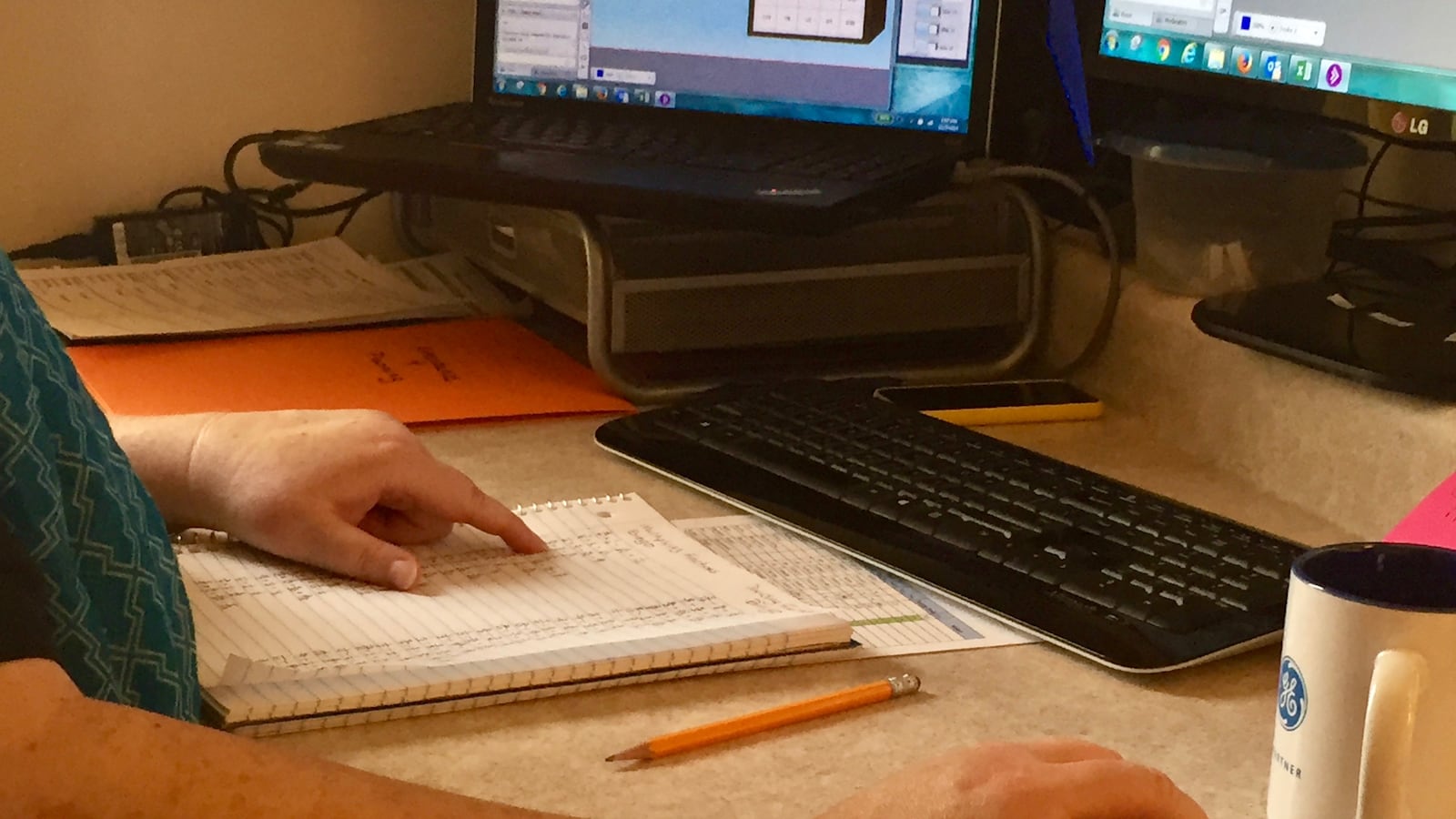After more than two years, several state hearings and six F-grades, Indiana officials are expected to decide on the fate of one of the state’s largest online schools.
On Wednesday, the Indiana State Board of Education is set to take up the case of Hoosier Academy Virtual Charter School. The school has dealt with years of low test scores and poor letter grades, which triggered its first state board hearing in March of 2015.
Virtual school leaders argue the poor performance is because they serve a challenging population of students, including those who frequently switch schools, and come to school far behind grade level. In fact, every online school in the state that tested students in 2016 received an F grade, and most have fewer students passing ISTEP than their traditional counterparts.
Read: The broken promise of online schools
This week marks the fourth board appearance for the school, managed by the for-profit online education provider K12 Inc. Here are some possible routes the board could take when it meets Wednesday in Evansville:
The board could close the school at the end of this year.
Charter school authorizers have ordered schools to close before based on poor test scores, but this is the first time the state board would take such a step. Other traditional charters that had hearings for repeated F-grades at the same time as Hoosier Academy have since boosted their grades and no longer require the state to get involved.
In 2016, 18.5 percent of Hoosier Academy students passed both ISTEP English and math exams, compared to a state average of 51.6 percent. The school’s graduation rate has been fairly flat for the past several years. In 2016, 22.7 percent of students graduated, compared to 89.1 percent statewide.
One concern from board members has been that closing the school could leave thousands of students without a similar school. While there are other virtual education providers in the state, those school leaders have said taking on hundreds more students in a short time would be difficult, if not impossible, to sustain.
The board could reduce the fee Ball State University collects for overseeing the school and bar the it from accepting new students, but let it remain open.
Last year, the university collected about $450,000 for overseeing Hoosier Academy, one of several charter schools it is responsible for. That fee is 3 percent of what the school receives from the state, which is determined by school enrollment. About 3,300 students across Indiana attend Hoosier Academy Virtual, and the network as a whole, which includes two other virtual and hybrid schools, enrolls about 900 additional kids.
Ball State officials are scheduled to present a detailed plan for how they plan to work with the school to improve. The plan includes efforts to make sure K12 Inc.’s curriculum is aligned with state learning standards and to develop a team of staff members to ensure students are engaged with their classes and parents have the knowledge and support they need to help their children be successful.
The board could find a new authorizer for Hoosier Virtual.
If the state board decides Ball State has not adequately worked to oversee the school, it can vote to switch the school’s authorizer and begin the process to find a replacement.
Or it could further delay the decision, as it has in the past.
The most recent hearing for Hoosier Academy Virtual, headed by state board member Byron Ernest, was in January. At that meeting, the board tabled a vote on consequences for the school, citing a need for more information.
According to a memo from state board staff, Hoosier Academy says it meets criteria outlined by a recently modified state charter school law that should allow it to stay open.
State law says that if a school serves kids with particular challenges, such as drug addiction or a history with the juvenile justice system, they can be given special consideration from the board. Hoosier Academy officials have said their school serves a number of students who could fall under this umbrella, including ones who have had problems with bullying, health issues or need flexibility to accommodate athletic training or frequent family moves.
Similarly, the board can also consider mobility rates, or how frequently students transfer in and out of the school. The mobility rate at the school has been high for nearly all of its existence. Last year, almost two-thirds of students had been enrolled for less than one year.
You can read more of Chalkbeat’s reporting on Indiana online schools here.

